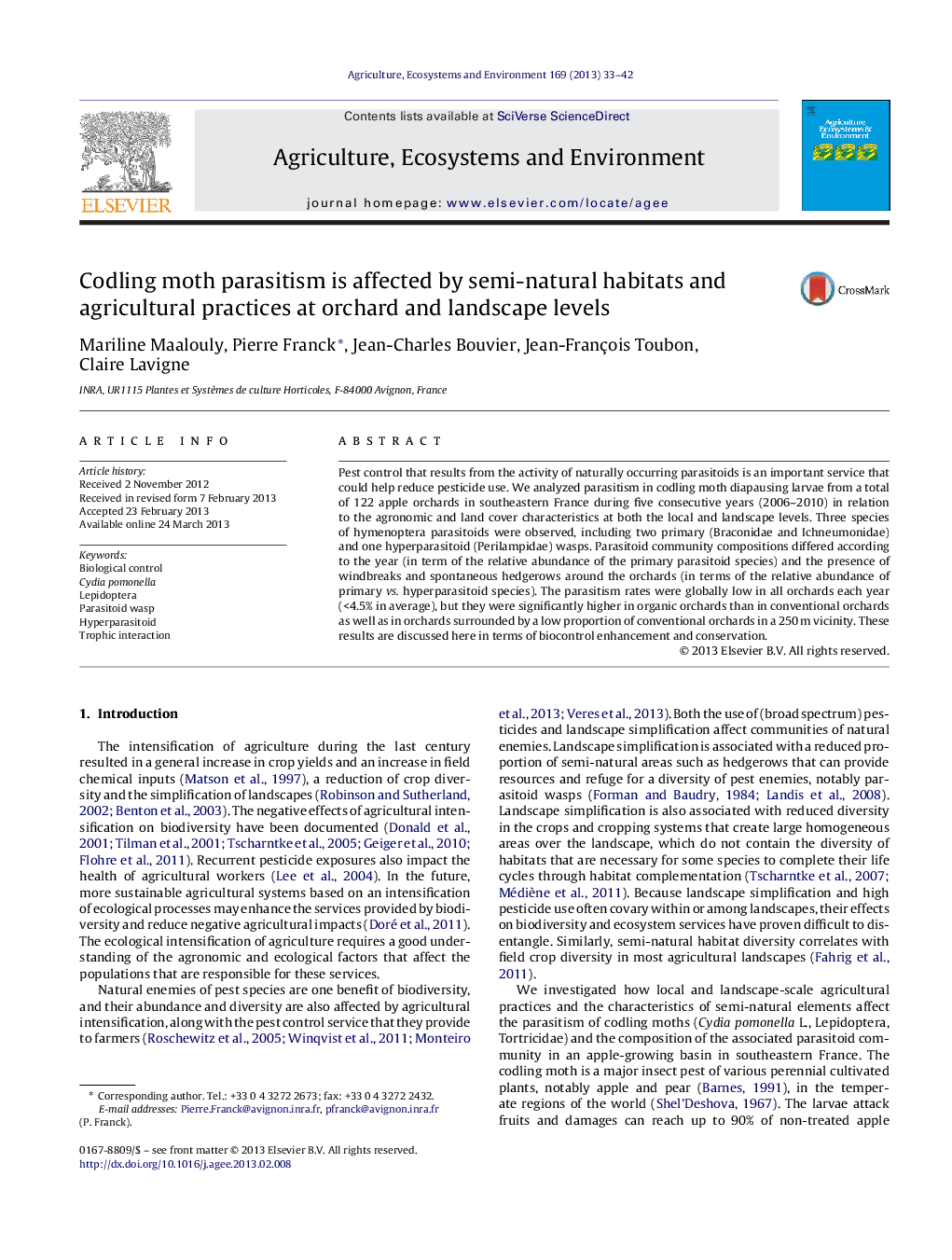| Article ID | Journal | Published Year | Pages | File Type |
|---|---|---|---|---|
| 2414302 | Agriculture, Ecosystems & Environment | 2013 | 10 Pages |
•A community including only one hyper- and two primary hymenoptera parasitoids.•Parasitoids vs. hyperparasitoid relative abundances enhanced by hedgerow presence.•Low parasitism rates on codling moth larvae in commercial apple orchards.•Parasitism rate depending on protection practices at local and landscape levels.
Pest control that results from the activity of naturally occurring parasitoids is an important service that could help reduce pesticide use. We analyzed parasitism in codling moth diapausing larvae from a total of 122 apple orchards in southeastern France during five consecutive years (2006–2010) in relation to the agronomic and land cover characteristics at both the local and landscape levels. Three species of hymenoptera parasitoids were observed, including two primary (Braconidae and Ichneumonidae) and one hyperparasitoid (Perilampidae) wasps. Parasitoid community compositions differed according to the year (in term of the relative abundance of the primary parasitoid species) and the presence of windbreaks and spontaneous hedgerows around the orchards (in terms of the relative abundance of primary vs. hyperparasitoid species). The parasitism rates were globally low in all orchards each year (<4.5% in average), but they were significantly higher in organic orchards than in conventional orchards as well as in orchards surrounded by a low proportion of conventional orchards in a 250 m vicinity. These results are discussed here in terms of biocontrol enhancement and conservation.
